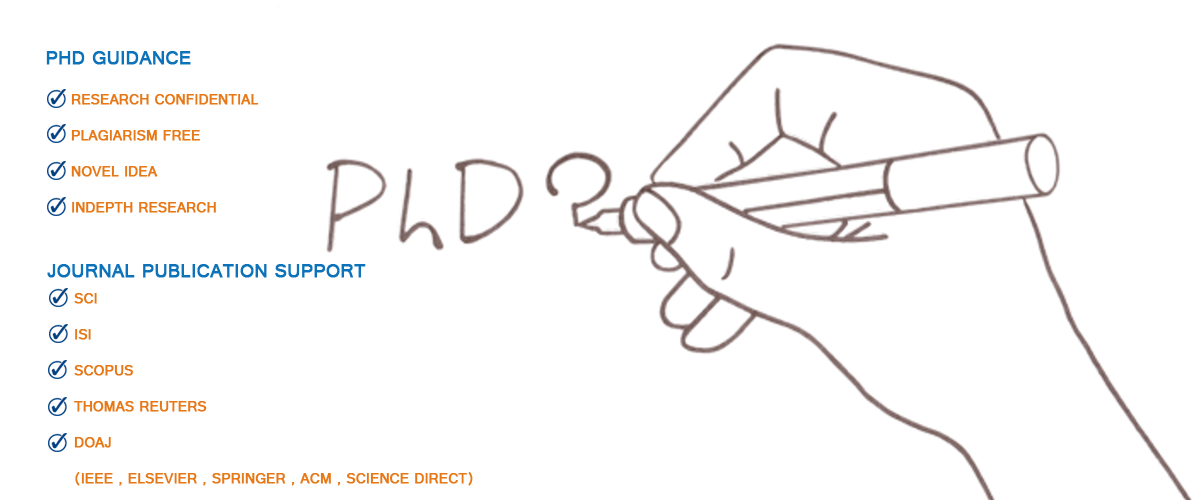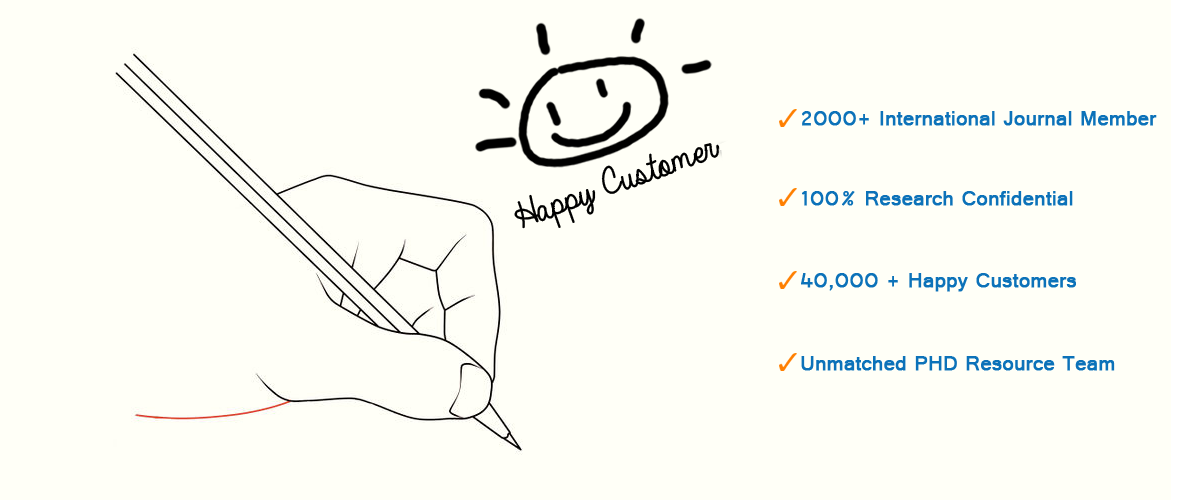Blockchain is constructed in the form of a peer-to-peer network to establish a decentralized system where the data is shared between all nodes without central administration. In specific, it includes the immutable data storage system in which the data cannot be easily changed. And, these data are stored in numerous numbers of sequential blocks that are connected like a chain. On this page, you can grasp knowledge on blockchain thesis topics, fundamentals, characteristics, research areas, challenges, etc.!!!
Why Blockchain Applications are Important?
Blockchain technology is also popularly referred to as the trust-creating approach. Since, it has reliable features such as trustworthiness, robustness, security, and privacy. Let’s see them in detail.
- Trust: To provide a protective shield against third party interference, blockchain furnishes the decentralized system with distributed ledger technology
- Privacy: To assure the confidentiality of the data, blockchain utilizes a few privacy guaranteed approaches as homomorphic encryption and zero-knowledge proof. It hides the block information and validates the transaction accuracy
- Security: To prevent digital crimes, blockchain has included multi-signature cryptographic encryption techniques to protect the blocks. Also, it includes other multi-computing mechanisms to improve security and ensure secure auditing
As mentioned earlier, blockchain is a chain of blocks with distributed ledger technology that is connected with a public network. It simplifies the information stored in the decentralized with proper security measures. So, many scholars are looking for innovative Blockchain Thesis Topics to make their professional foundation in the security area. Now, we can see some important entities that make blockchain stand out from usual security mechanisms.
- Decentralized: Blockchain has distributed structure of network where there is no centralized control over the network. So, every node in the network has equal rights
- Transparent: The consensus mechanism in the blockchain makes peer nodes validate each block. So, when the new transaction arrives it will be visible to all the nodes. Also, without compromising peer nodes, the transaction cannot be altered.
- Tamper-proof: Each block of transaction in the blockchain is secured by hashing technique. So, it is tamper-proof that no one can change the data until the majority of miners support
For optimizing the functionalities of the blockchain system, we have given you the three effective solutions. These methods surely help you to manage the huge information. Let’s see them in the followings,
- Scaling by increasing huge number of nodes to the blockchain, (Horizontal Scaling)
- Scaling by increasing more number of resources to a single node (Vertical Scaling)
- Minimize the redundant data transmission to reduce the computation overhead
Now, we can see the list of consensus algorithm that iswidely used in many Blockchain technology projects. And, it is classified as permissioned consensus and permissionless consensus. In permissioned network, it requires admin/owner approval to join the network i.e., private. But in permissioned network, anyone can easily join the network i.e., the public.
Consensus Protocols
- Permissioned Consensus (With the known quantity and untrusted node)
- Non-BFT limited nodes (Without malicious nodes)
- Byzantine Fault Tolerance (BFT) with limited nodes (With malicious nodes)
- Permissionless Consensus (With the unknown quantity and malicious node)
- Delegated Proof-of-Skate (DPoS)
- Proof-of-Skate (PoS)
- Proof-of-Work (PoW)
- Other PoW
- Nakamoto
- Other consensus mechanisms
So far, we discussed what is blockchain, why to use blockchain, what made blockchain unique, how to optimize the blockchain and the type of blockchain infrastructure. Hope, you all understand what we try to convey to you.
Now from a research point of view, our resource team has shared some important research areas where you find so many Blockchain Thesis Topics for your study.
Research Areas in Blockchain Technology
- Cloud Blockchain Analytics
- Decentralized Cloud Computing
- Blockchain-based Cloud Cryptography
- Big Blockchain Data Analytics
- Artificial Intelligence in Blockchain
- Blockchain Security in Cloud Scalability
- Deep Machine Learning Adoption in Blockchain
- Blockchain Services for Fog-Edge Computing
- Blockchain Privacy, Integrity and Security
- Blockchain-enabled Mobile Computing
Why do we implement Blockchain?
Next, we can see the use of implementing blockchain in a real-time environment. In an exiting system, some are centralized and some are decentralized but not secure. Blockchain is a secure decentralized storage system. Because of its distributed characteristics, the attacker couldn’t find the single-point entry. Also, the records in this system are securely stored through consensus and distributed ledger technologies. So, there is no centralized authority to control the system. However, it also has some technical issues while deploying it in the real-world. And, some of them are given below,
What are the challenges in blockchain implementation?
- Lack of Platforms /Tools / Software
- Insufficient development tools and platforms
- Insecurity and complications on using a centralized security system
- Developers with minimum knowledge and numbers
- Agreement and Legal Problems
- Distribution of sensitive information
- Lack of transparency in regulatory laws, policies, and standards
- Cost for System Execution
- The expense for training the employee
- The expense for developing the system
- The expense for deploying the system in real-world
- The expense for maintaining active resources
- The expense for changing infrastructure from one to another
- Real-Time Implementation
- High energy utilization
- Lack of safety (51% attack and selfish mining)
- Few decentralized ledger mechanisms take more time invalidating the transaction
- Volume of Storage
- High traffic congestion due to some blockchain protocol
- Difficult to handle and store large-scale information
- Consensus Algorithm
- Lack of improved techniques for reliability
- PoS has security issues in terms of theoretical context
- PoW suddenly favors centralization
Though it has several misconceptions, it is a powerful privacy-preserving technology to maintain the confidentiality of the user’s personal information. For your information, here we have given you some useful techniques for achieving privacy in the blockchain.
Privacy-Preserving Techniques for Blockchain
- Transaction Data Anonymization
- Homomorphic Hiding
- Zero-Knowledge Proofs (ZKPs)
- Mixing
- Decentralized
- Centralized
- Differential Privacy
- Key Management / Smart Contract
- Secure Multi-Party Computation (SMPC)
- On-Chain Data Protection
- Secret Sharing / Threshold
- Attribute-based Encryption
- Asymmetric Encryption
- Identity Data Anonymization
- Homographic Hiding
- Mixing
- Commitment Schemes
- Ring-Signatures
- Threshold
- Linkable
- Zero-Knowledge Proofs (ZKPs)
- Interactive
- Non-Interactive (Stark and zk-SNARK)
Now from a development point of view, our developing team has shared some platforms that are specially designed for a blockchain system. These platforms/frameworks let the developer use their predefined modules and tools to build, test, deploy and run the blockchain projects.
How to implement the blockchain?
- Parity:
- It offers a well-developed infrastructure for Ethereum clients to build smart contracts. Also, it is secure and fast to run any blockchain solution.
- Solidity:
- It is a new object-oriented language to develop smart agreements in different blockchain-supported frameworks. For instance: Ethereum
- Ethlint/Solium:
- It is specially designed to check the security and style of the solidity code used for developing smart contracts. Further, it is also used to solve the issues (if any)
- Truffle Suite:
- Open-source platform to easily and rapidly develop decentralized blockchain security applications using sophisticated in-built tools. By the by, it incorporates three essential entities as Drizzle, Truffle, and Ganache
- Remix IDE:
- It is open-source software that supports both window and web applications. Also, it has several modules to develop, test and deploy smart contracts using solidity in the browser itself.
Further, we have also given three main blockchain-enabled platforms which gain global attention from all parts of the world. Here, it includes the availability of smart contracts, blockchain type, supporting consensus protocols, and programming languages.
Popular Blockchain Platforms
- R3 Corda
- Smart Contract – Yes
- Operation Type – Permissioned
- Consensus – Proof-of-Stake (PoS) and Proof-of-Work (PoW)
- Programming Languages – Java and Kotlin
- Ethereum
- Smart Contract – Yes
- Operation Type – Permissioned and Public
- Consensus – Proof-of-Stake (PoS) and Proof-of-Work (PoW)
- Programming Languages – SCILLA, Flint, and Solidity
- OpenChain
- Smart Contract – Yes
- Operation Type – Permissioned
- Consensus – Partionned
- Programming Languages – C++, Java
- IBM Blockchain
- Smart Contract – Yes
- Operation Type – Permissioned
- Consensus – Proof-of-Stake (PoS) and Proof-of-Work (PoW)
- Programming Languages – Java and Go
- Ripple
- Smart Contract – Yes
- Operation Type – Permissioned
- Consensus – Proof-of-Work (PoW)
- Programming Languages – C++
- Multichain
- Smart Contract – No
- Operation Type – Permissioned
- Consensus – Practical Byzantine Fault Tolerance (PBFT)
- Programming Languages – Python, Java, PHP, Go, and C++
- Hyperledger
- Smart Contract – Yes
- Operation Type – Permissioned
- Consensus – Practical Byzantine Fault Tolerance (PBFT)
- Programming Languages – Java, Node.js, and Go
- Hydrachain
- Smart Contract – Yes
- Operation Type – Permissioned
- Consensus – Proof-of-Stake (PoS) and Proof-of-Work (PoW)
- Programming Languages – Python
- BigChainDB
- Smart Contract – Yes
- Operation Type – Permissioned and Public
- Consensus – Byzantine Fault Tolerance (BFT)
- Programming Languages – Java
- Bitcoin
- Smart Contract – Yes
- Operation Type – Public
- Consensus – Proof-of-Work (PoW)
- Programming Languages – BitML, Rootstock (RSK), and Ivy
In addition, we have also listed the platforms that are more suitable for decentralized systems. Our developers have years of experience in developing challenging blockchain projects. So, we surely support you at your needy despite the research hurdles.
Decentralized Storage Platforms
- Storj – Assure security over the data through complete encryption
- Sia – Secure storage system at low cost where the data are encrypted through advanced techniques
- IPFS – Apply the cryptographic function on data to attain immutability i.e., the data cannot be changed further
- Maidsafe – Ensure privacy by storing the data in the secured network where data are encrypted in default
- Datrum – Allow the user to download the data from the distributed network through smart contract enabled mobile apps
- Swarm – Enable the ethereum support for users’ ease. And also, it let the users interact with the swarm through local API (HTTP proxy)
- BigchainDB – Combo of conventional blockchain and decentralized storage which experiences both the technologies advantages
- Filecoin – Based on certain specifications (cost, speed), the user can store the data with an assurance of security
On the whole, if you need information on Blockchain Thesis Topics or developing platforms, you can make touch with us. Our experts will instantly communicate with you to fulfill your requirements.








